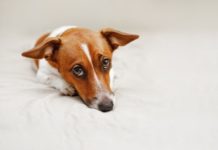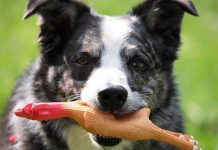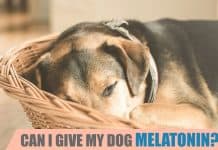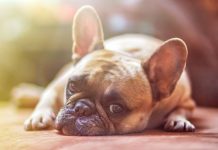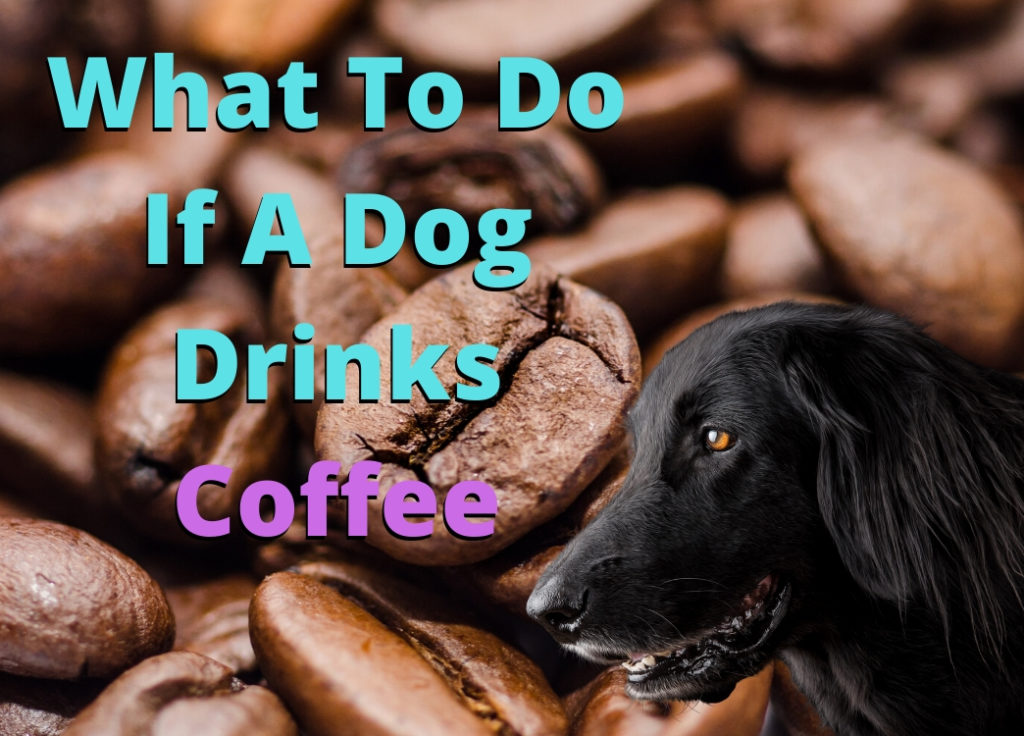
Some dogs will quite literally eat or drink anything that they see. The stronger something smells, the more likely some dogs will be to go and put their face in it, they really are a law unto themselves.
While training your dog can be very beneficial in reducing this type of unwanted behavior, however, the fact of the matter is that dogs have an instinct to act in this manner. As their owners, we need to always be mindful of what our dogs and eating or drinking at all times.
Your dog has probably eaten some pretty strange things in their time. You might look at something and think that a dog really shouldn't be eating it. Yet, more often than not, our dogs just swallow it down and get on with their lives with no harm whatsoever.
You might have a dog that is always jumping at you whenever you are eating or drinking anything. This is really not uncommon in dogs. And, many owners will fall for those puppy dog eyes and give in and feed their dog whatever they are having.
The problem with doing this is that there are many things that are toxic to dogs. They might be perfectly okay for us to eat, but they could do serious damage to your pet's health.
Knowing what you can and cannot give your dog is vital as you wouldn't want to make any emergency trips to the vet to try and help your very sick dog.
Some examples of foods that you should let your dog eat include chocolate, grapes, raisins, onions, garlic, chives, macadamia, and caffeine.
Keep your dog safe at all times by keeping them away from food or drink that is toxic to them is vital.
Is Coffee Dangerous To Dogs?
In short, coffee is one of the things that us humans enjoy that is actually toxic to our dogs. It might be amusing to offer your dog a drink of your coffee whenever you are having a cup. However, you need to be aware that coffee can actually be quite dangerous to the health of your dog.
Coffee contains caffeine, which is a stimulant. Dogs are considerably more sensitive to stimulants than us humans. And, what might be a mild pick-me-up for you could be fatal for your pup.
If your dog has consumed coffee, then it may experience nausea, restlessness, hyperactivity, seizures, vomiting, tremors, elevated heart rates, regurgitation, and diarrhea.
With this in mind, it is always best to be very cautious about leaving coffee around a dog unattended. Even a well behaved dog could well decide to take a drink from your cup when you are not looking, or swallow some coffee beans if there are some that have been left in sight.
How Much Coffee Is Toxic To Dogs?
The amount of coffee that a dog can consume without detrimental effects will vary. As it is the amount of caffeine present in the coffee that is the issue, the strength of the coffee will be a factor that you need to take into account.
All dogs are different. The size and weight of the dog are also relevant factors.
If your dog has had a couple of laps or a small mouthful of coffee from a cup, the chances are that if the coffee wasn't too strong, they wouldn't show any major side effects, and they may well be fine.
In the instance that they've had just a small amount of coffee, be sure that you keep a watchful eye on them over the next few hours to see if they start showing any signs of caffeine poisoning. In the meantime, it is always best to try to encourage your dog to drink plenty of water.
If your dog was to drink much more of the coffee, however, or even to eat whole coffee beans or grounds, then it is more likely that they will demonstrate some or even many of the symptoms of coffee poisoning.
The amount of coffee that is toxic to dogs will depend on the size and weight of the dog. A smaller dog will be able to consume much less coffee than a bigger, heavier dog.
In general, the following rule can be applied; 150 mg of coffee per 2.2 pounds of your pet's body weight is lethal.
To give an idea of how much this is, the average cup of coffee has anywhere between 100 mg – 165 mg of caffeine in it. A caffeine tablet will have 200 mg.
If your dog has consumed just 14 mg of caffeine per pound of their body weight, they will experience restlessness and some of the milder symptoms of caffeine poisoning.
If your dog were to eat a raw coffee bean, the amount of caffeine that they might ingest could be anywhere between around 6 mg per bean to about 10 mg.
Regardless of how much coffee you think that your dog has consumed, you should always err on the side of caution and be alert for the signs and symptoms of caffeine poisoning in your dog.
Often, it can be very difficult to know how much they have consumed; you don't really have the time to try to work out exactly how much they might have had, or even how much they even weigh. Assume that they have had too much.
How Long Does Caffeine Stay In A Dog's System?
The signs of illness brought on by your dog drinking coffee will probably not show up for a while. It could take between thirty minutes and an hour for the caffeine to take effect on your dog.
In some cases, restlessness or hyperactivity may be the initial signs that they have consumed coffee. Think about how you are after several cups of coffee. Coffee is a stimulant. It wakes your brain up and makes you super aware of everything that is going on around you. Now, imagine your dog has drunk several cups of coffee.
Now couple that with the feeling of nausea that you might feel if you had drunk too much coffee. Even a small amount of coffee will cause this.
If you touch your dog through their fur, it may very well be possible that you will be able to feel their pulse racing. The faster or more irregular their heartbeat gets, the more danger they are in.
Problems with the heart rate caused by ingesting coffee or other caffeinated drinks could lead to death, she says. This type of clinical signifier can last for anything between around six and 12 hours, at least. The length of time that the severest symptoms will show will depend on the dose of caffeine that the dog gas consumed.
Coffee can stay in your dog's system for between 24 and 48 hours.
It is important to remember that this does not just apply to coffee, there is caffeine in energy drinks, and soft drinks such as cola.
What do you do when you know that your dog has drunk coffee?
If you know that your dog has drunk coffee, stay calm but take it seriously.
The same rule should apply if your dog has eaten coffee beans, powder, or grounds, and any other caffeinated products for that matter, including tea, energy drinks, or diet pills.
Keep an eye on your dog following on from them ingesting the coffee. It might take at least half an hour for any signs or symptoms to begin to show.
In the meantime, phone your vets straight away. You need to make sure that you get professional advice on what you should do next. The sooner you can do this, the better.
Your vet may advise you to bring your dog in to see them immediately. If you are able to bring your pet into their surgery quickly enough, it might be possible for them to induce vomiting in your dog.
By making your dog vomit during the early stages following on from consuming coffee, they will not have already absorbed very much of the toxins.
It is vital that you do not try to make your dog vomit yourself. If you do not do it correctly, you may cause your dog severe health problems, including aspiration pneumonia. Make sure that you wait until your vet does it in a clinical setting.
If too much time has elapsed since your dog ate or drank coffee, it may have already entered into their system. Your pet's vet will no longer be able to induce vomiting.
Instead, they will need to flush your dog's system out. They might do this with the use of an intravenous drip.
Your dog's vet may also want to give them medications that will control their heart rate, slow down any dangerously elevated pulses, and bring any tremors and seizures under control.
Following on from an initial inspection or treatment, the vet might want your dog to stop in their surgery for a few hours so that they can be monitored. This precautionary measure will be valuable in ensuring that if your dog's condition worsens, they are in the right place for swift action to be taken.
If the right course of action is taken and your vet is consulted, then your dog will stand a much greater chance of survival. If the correct measures are taken quickly, there is no reason to assume that they will not survive the ordeal.
How to keep your dog safe from food and drink that is toxic
Making sure that your dog does not have access to coffee or any other food or drink that may be toxic to them is important.
You should always ensure that if you are giving your dog any of your food or drink that it is safe for them to consume them. Some human foods may not be toxic to dogs, but they can be very unhealthy for them. A dog's stomach may be sensitive to certain foods.
Training your dog
One of the best ways that you can help prevent your dog from taking food or drinks that they shouldn't is through training.
The trick with great dog training is not to scold them from unwanted behavior. Instead, you should make sure that you reward the times that they have behaved in a way that you want them to.
Teaching basic manners to your dog using positive reinforcement will make it easier for you to set ground rules about what is acceptable and not.
These ground rules should be extended to their behavior around food. Make sure that you teach your dog to behave in a positive way around food. Start this training early on, and be careful to avoid deviation from the way that you want them to act.
For instance, your dog should not attempt to steal food off your plate. You can do this by instructing your dog to sit or stay while you are eating. Rewarding them with their favorite treat or a toy to play with will let them know that they have behaved in the way that you wanted them to. Repeat this action a number of times, and your dog will know that if they sit patiently while you eat, they will be rewarded later with something that they love.
Extend this behavior training to all food, even their own. If you teach your dog to wait until they are instructed to eat, then they will be less likely to act out and eat something that they are not meant to.
Keep your home tidy.
If you leave food lying around your home, then even the best training will make it hard for your dog to resist sniffing around to see what they can eat.
Make sure that you regularly sweep, vacuum, and mop floors. If food debris has dropped on the floor, your dog may be inclined to go and lick it up. If you have dropped coffee granules on the floor when making a cup, then you run the risk of your dog coming and swallowing them.
By keeping your home tidy, clearing away leftover food and drinks, and disposing of food waste thoroughly, you will leave less, easily accessible, and tempting food that might entice your dog.
Store all items that are toxic to dogs out of reach
If your dog were to eat a coffee bean that had accidentally fallen on the floor, it could be really bad for their health, and may even be fatal.
You need to avoid the risk of this happening. One of the most reliable ways that you can use to prevent your dog from eating or drinking toxic items is to keep them out of their reach.
Keep items such as medicines, coffee, chocolate, and other things that are toxic to dogs in cupboards that are high up. Putting these things in low down cupboards might make it easy for your dog to get in and steal food that they should not be eating.
All it takes is for a dog to work out how to pull a door open, or for you to slightly leave a door ajar, and your beloved pet will be inside your food cupboard looking for things to eat.
By removing the temptation, you will be protecting your dog's health.
What other measures can be taken to protect your dog from toxic food and drink items?
Take out pet insurance
If your dog ever swallows anything that they shouldn't, the stress and worry that this might cause are going to be enormous.
But the financial burden of the emergency treatment that your dog may need to have as a result of their few minutes of curiosity could be massive. The last thing that you want from your dog stealing your coffee is a vet bill that you were not expecting.
It is vital that you have good pet insurance in place. By having the right level of healthcare insurance cover for your dog, you will be able to lower the costs of unexpected vets bills.
Register with a vet
Having somewhere that you can take your dog in an emergency is vital. Being registered with a vet will be helpful. If you ever need to take your dog in for something like coffee poisoning, then the vet will be able to find out a lot more about your dog's medical history from their own files. This will make it much easier for them to treat your pet.
Registering with a vet will mean that your dog will be able to have regular health checks in order to keep an eye on any potential issues that may need attention. Your dog will also be able to get vaccinations against common illnesses that affect them.
Importantly, registering with a vet will mean that you will immediately know who you are calling in the event of an emergency. You will also know exactly where you can take your pet to get the care that they need.


